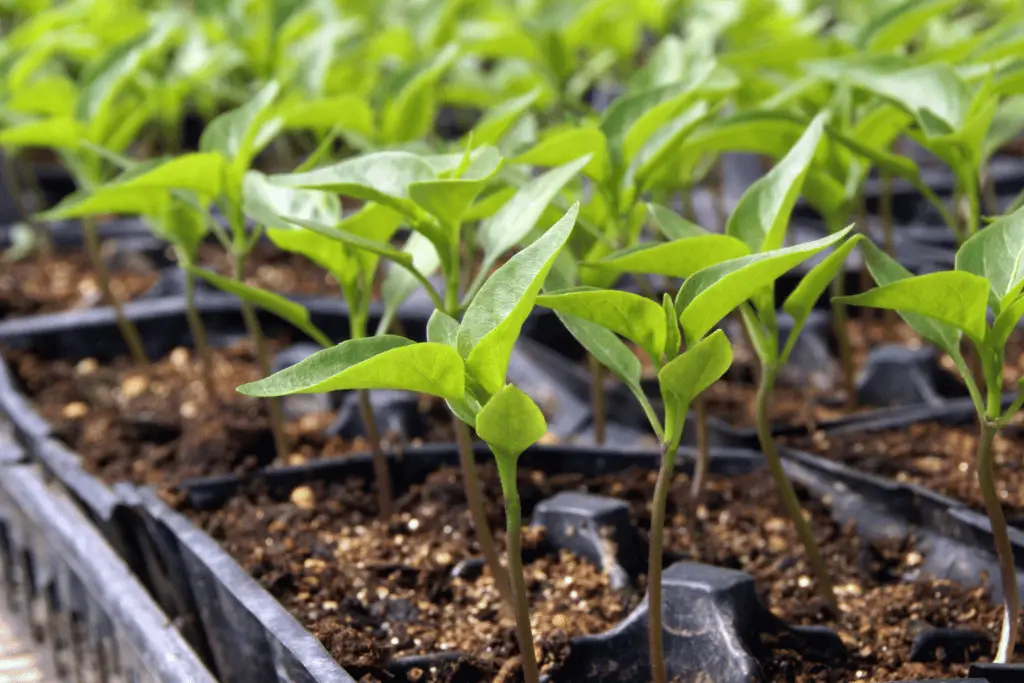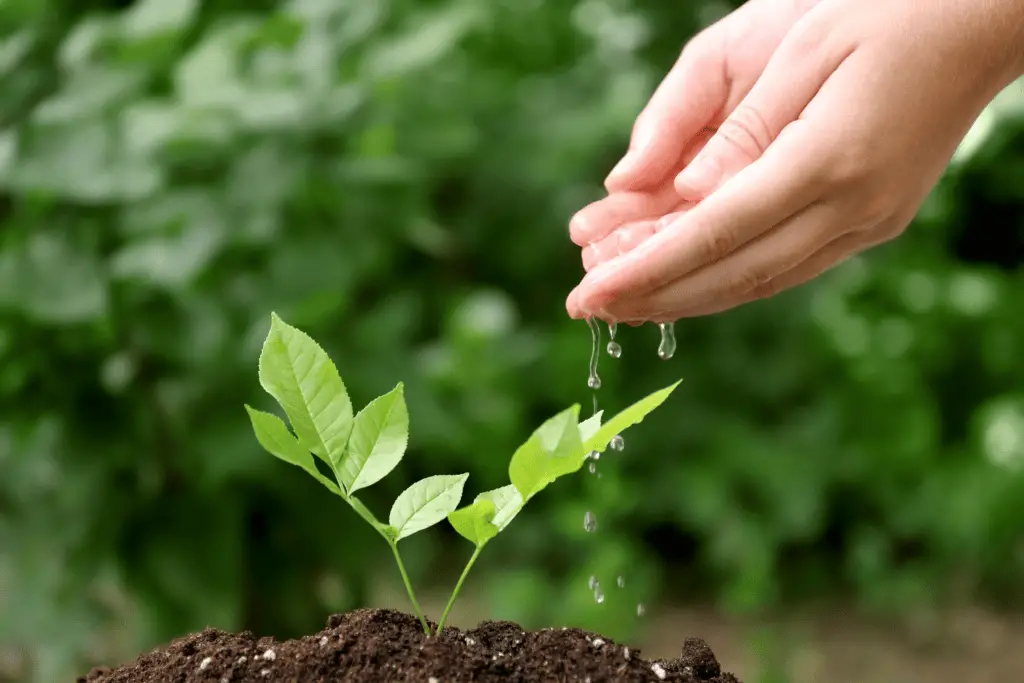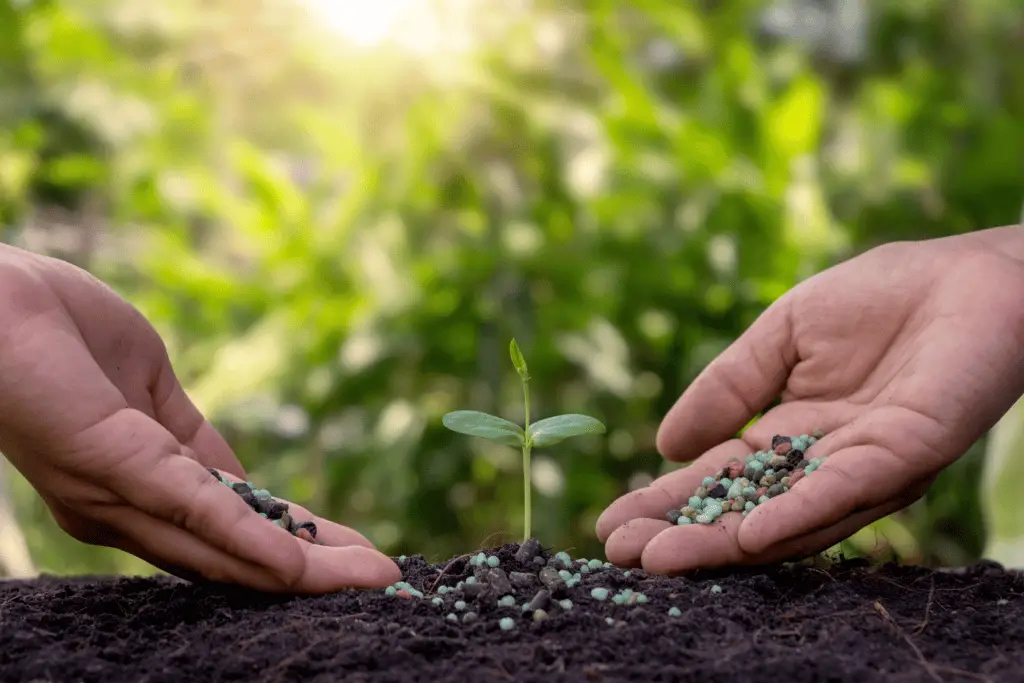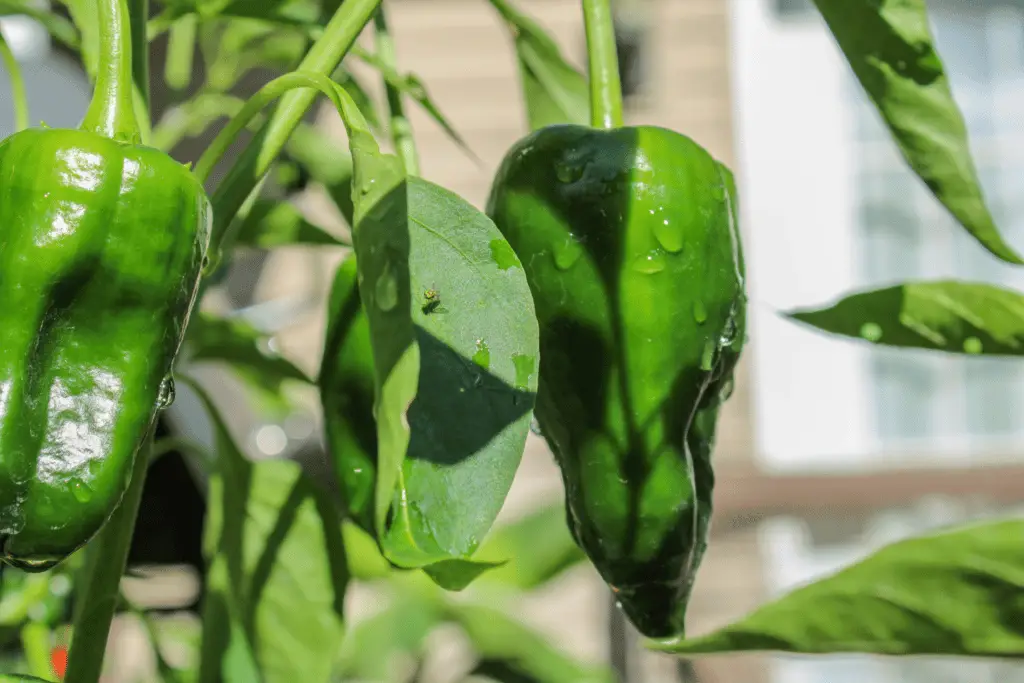It’s a huge bummer when we put a lot of time and effort into gardening, only to have slow-growing plants – or plants that aren’t growing at all! The good news is, it’s pretty easy to troubleshoot your peppers if you know what to look for.
Your poblano peppers may not be growing or producing for a number of reasons. Poblano peppers require lots of sunlight and adequate water to grow; if your plants are denied either, they won’t be able to grow or produce. For best results, they also need to be kept at 70-80°F. If your plant still isn’t growing, they probably need to be fertilized.
Keep reading to learn more about why your peppers might not be growing and what you can do to help them along.
Why are my poblano peppers not growing?
After all the work to grow the seedlings and get them into your garden, you’re likely to be frustrated if your poblano peppers don’t start growing. Why aren’t they the tall, productive plants you’re expecting?
Some reasons your poblano peppers aren’t growing are:
- Not getting enough sun
- Not getting enough water
- Weather too hot or cold
- Needs to be fertilized
Keep reading to learn how to fix these common problems!

Not getting enough sun
This is probably the #1 reason why poblanos have stunted growth.
Your poblano peppers may not be growing because they’re not getting enough sun. Poblano peppers grow best with upwards of 10 hours of direct sunlight each day. They need so much sun because they’re such heavy producers, and the sun provides them with the energy to grow.
Poblano peppers need at least 6 hours of sunlight each day at a minimum. Ideally, they would be getting anywhere from 8-10 hours of direct sun.
If your poblano pepper plant isn’t getting at least 6 hours of direct sunlight, this may be the culprit of your stunted growth. Even if your plant is getting plenty of hours of sunlight, it has to be direct.
Indirect sunlight doesn’t provide as much energy for photosynthesis because obstacles absorb some of the energy along the way. So if you only have access to indirect sunlight, your plant will likely need something between 10-12 hours to make it work.

What to do if you don’t have enough sun in your yard
You may not have the option to increase the amount of sun that your peppers are getting.
In that case, you just have to be really diligent about all other aspects of gardening such as watering, fertilizing, and having high-quality soil.
Not getting enough water
Watering is harder than it seems!
Your poblano peppers may not be growing because they’re not getting enough water. Poblano peppers need between 1-2 inches of water per week. However, extreme heat or very well-draining soil might warrant even more water. Underwatered plants will have droopy leaves.
Poblano peppers need between 1-2 inches of water per week.
That being said, extreme heat or very well-draining soil can increase that number even more.
And to complicate things even further, under and over-watering symptoms are the same. Both will cause wilting. The trick is to look at the stem. An over-watered plant will have a wilted stem, while under-watered plants typically only droop in the leaves.

How to water your poblano peppers enough
One great way to ensure that your poblano peppers get enough water is to install an irrigation system.
To test whether or not you need to water your poblanos, put your finger in the soil. It should be slightly damp a few inches down.
If you pull your finger out and no dirt sticks to it, you probably need to water again!
Weather too hot or cold
This may seem out of your control, but there are actually mitigation methods that you can take to protect your peppers.
Your poblano peppers may not be growing because the weather is too hot or cold. Poblano peppers need temperatures between 70 and 80°F in order to grow best. You’ll see stunted growth outside of this range. Poblanos die completely in a frost.
Poblano peppers have a very specific temperature tolerance.
They grow best with temps between 70 and 85°F and will only germinate between 70 and 80°F.
Poblano peppers start to show signs of discomfort around 50°F and will die completely in a frost.
On the other hand, poblano peppers start to drop flowers at 90°F. While they can “tolerate” high temperatures for a short period of time, they’ll definitely suffer.
How to protect your poblanos from extreme weather
To protect your poblanos from extreme cold:
- Use mulch
- Use a greenhouse
- Use row covers
- Use a heat mat during germination
To protect your poblanos from extreme heat:
- Bring them inside
- Use a shade cloth
- Fertilize ahead of time to encourage protective foliage
Needs to be fertilized
Fertilization is key to healthy, happy plants.
Your poblano peppers may not be growing because they need to be fertilized. Fertilization provides plants with essential nutrients vital to growth. In fact, stunted growth is the main sign that plants need to be fertilized!
Stunted growth is the number one sign that poblano peppers need to be fertilized. The whole point of fertilization is to give your plants a boost of nutrients to help them grow!

How to fertilize
Use a fertilizer with an NPK value of 5-10-10.
Fertilize once when you transplant your poblanos. Then fertilize 2-3 times throughout the season.
You can also use an extended-release fertilizer which only needs to be applied once.
Why are my poblano pepper plants not producing peppers?
It’s called a poblano pepper plant for a reason. So where are the peppers?
Your poblano pepper plant likely isn’t producing peppers because it needs more potassium
Potassium is vital for fruit production. We’ll discuss that in the next section!
Needs more potassium
Potassium encourages the setting and growth of fruit. Let’s learn more!
Potassium is the main nutrient in charge of fruit production. It helps plants produce ATP which increases the rate of photosynthesis. Potassium also helps plants breathe.
Potassium helps the movement of water, sugar, and nutrients in plants. Perhaps most importantly, it helps in the production of ATP which directly correlates to the photosynthesis rate.
Potassium also helps stomata open and close. Stomata are the breathing mechanism of plants.
How to add more potassium
You can add potassium chloride or potassium hydroxide to your soil in order to increase potassium.
Just follow the directions on the label carefully to avoid scorching the roots of your poblano!
Why are my poblano peppers taking so long to grow?
Ugh, things are just taking forever!
Some reasons your poblano peppers may be taking so long to grow include:
- Not getting enough sun
- Not getting enough water
- Weather too hot or cold
- Needs to be fertilized
- Needs more potassium
It typically takes poblano peppers 2-3 months to reach maturity after germination. If they’re growing more slowly than that, try adjusting the above factors.

How do you stimulate poblano pepper growth?
By now, you should have a pretty good grip on this one.
To stimulate poblano pepper growth:
- Move to full sun
- Water 1-2 inches per week
- Protect from extreme temperatures
- Fertilize
- Add potassium
Follow the steps outlined in this guide and your poblanos will surely have boosted growth in no time!

